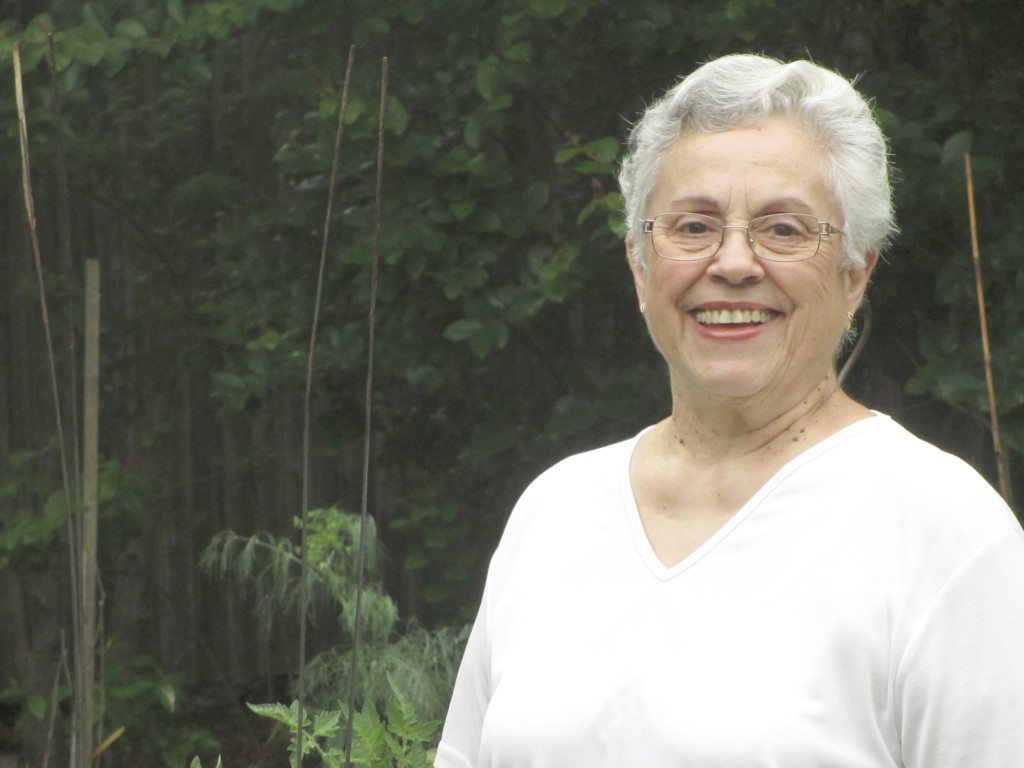I admit it. I am a lavender lover. I have traveled with my friend Barbara, who lives in Roslyn, to visit the Lavender on the Bay farm on the North Fork of Long Island to drink in the fragrant and visual feast of blooming lavender.
There are many good reasons to grow lavender in your garden. Lavender is an herb that attracts butterflies and other pollinators to our gardens while repelling other garden pests. In addition, they are often seen in xeriscaped gardens, which use little supplemental water because once established they thrive in sunny, dry conditions. Lavender is an evergreen perennial offering much garden flexibility. Since it can create a border of purple fragrance that attracts pollinators, it can become a focal point in a rock garden or a knot garden, it can be grown in a container, it can form a low hedge, it is available in many colors from white to pink to purple and it comes in a variety of growing habits.
Heat tolerant lavender loves a warm, sunny spot with good drainage since it does not like “wet feet.” The three most often seen cultivars are English lavender (L. angustifolia), Lavender hybrids (L. x intermedia) and French Lavender (L. stoechas). They prefer an alkaline soil with good air circulation to prevent root rot, which is a fungal disease. Start with purchased plants of the variety you wish to grow. This will ensure obtaining the correct variety since most lavender seeds do not come to true. Once established, these plants are largely pest-free and easy to grow without much intervention. Though Lavendula is hardy in our zone 7 area, I have found that the French varieties do best in a sheltered location in my garden due to our harsh winters.

(Photo by Josephine Borut)
Through trial and error, I have found pruning to be very important for lavender plants. If you ignore pruning the plant the first year, the plant will begin to look out of balance and shabby. Here is a plan of action that is recommended to avoid an untidy appearance. In the first year after the flowers have faded and before fall arrives, cut off the flower stalks back to the leaves and lightly trim the shrub. In the second year, prune back all the new growth to strengthen the original plant and encourage flowers, but do not cut the flowers until the fall. In the fall, after you have harvested the flower stalks, prune the plant into an pleasing, neat shape. In the third year, you will have a lovely blooming plant that only requires a light pruning in the fall.
To harvest the flowers, cut the stems after the morning dew has dried but before the sun gets very hot. Cut the stalks when the flowers are nearly open and then hang them in bunches with the flower heads hanging down in a dry, well-ventilated location. I have found that some varieties, such as Provence, do not dry well for bouquets because their flower buds fall off easily. If you wish to add lavender to your bouquets, try other English or French lavenders such as Betty’s Blue, Royal Velvet or Gros Bleu.

Many people add fresh or dried lavender to their baked goods, tea mixes and condiments such as vinegars, jams, jellies, syrups and sugars. The list of craft projects that use lavender is extensive, however, here are just a few: lavender wands, wreaths, swags, fire starters, cleaners and oils. The lavender which is most used for its strong fragrance in oils is L. x intermedia Grosso, and due to this fact it is also the preferred cultivar for wands and sachets. Recommended lavenders for culinary use are L. angustifolia Buena Vista, Melissa, Hidcote Pink, Folgate or Royal Velvet.
As I said in the beginning, I love lavender. More than one lavender plant flowering in my garden or in pots on my patio makes me a happy gardener.
Josephine Borut is currently on the board of directors of the Long Island Horticultural Society and is a past board member of the Long Island Rose Society. She is a current member of The American Rose Society, The Herb Society and The Long Island Horticultural Society, which meets on Sunday afternoon, with doors opening at 1:30 p.m. at Planting Fields Arboretum Conference Center in Oyster Bay. The next meeting is Sept. 18, with speaker Rick Mikula, noted author, presenter and butterfly habitat consultant. His topic will be Raising Butterflies. For more information, go to www.lihort.org.


























